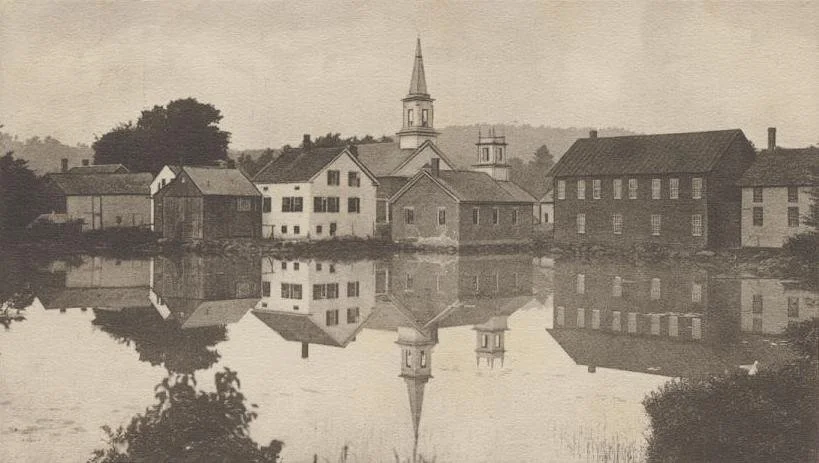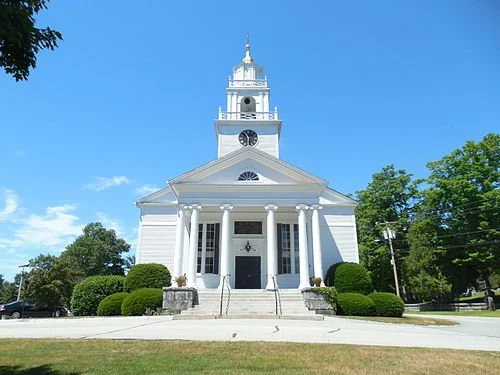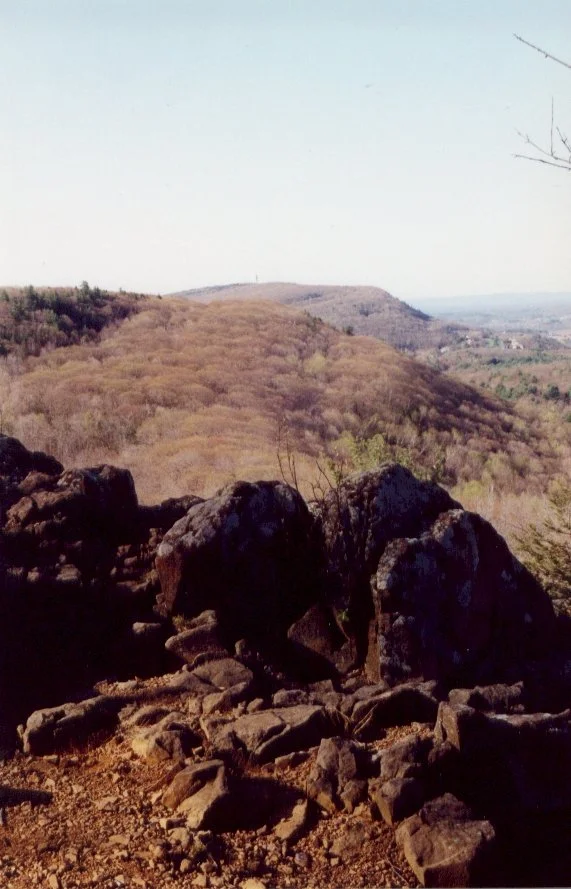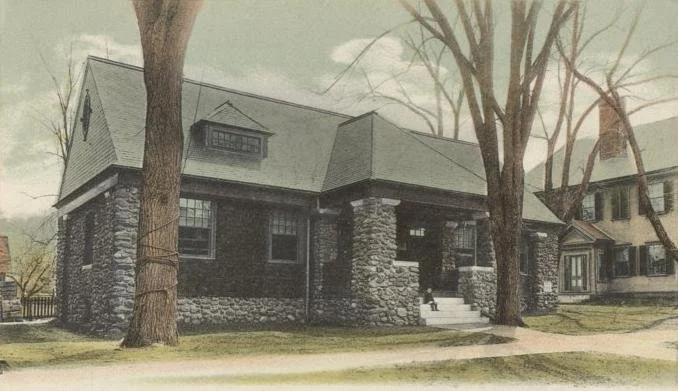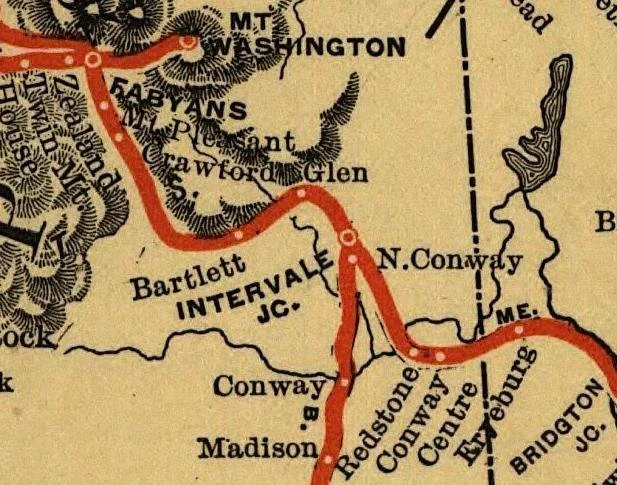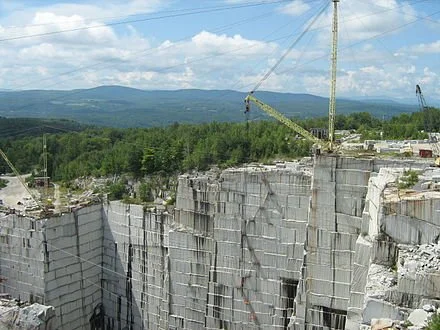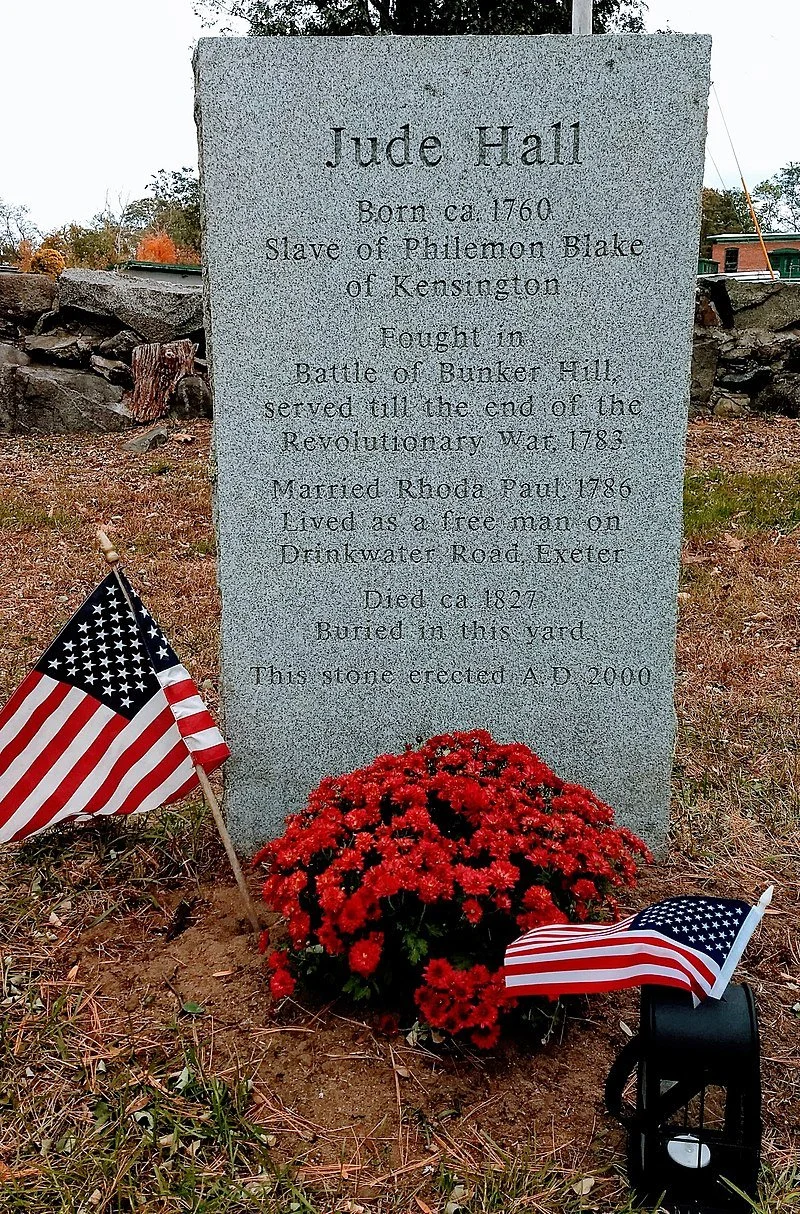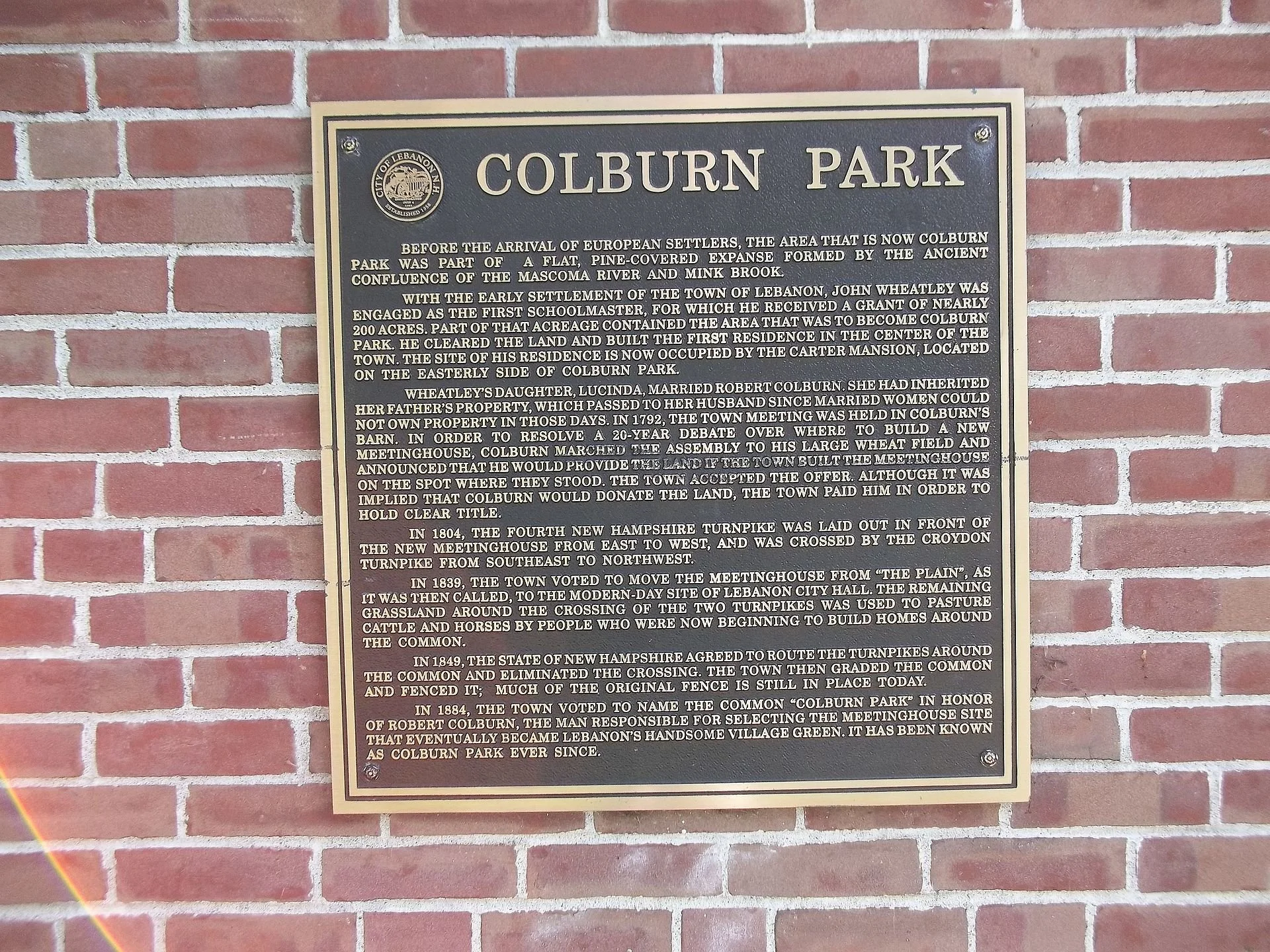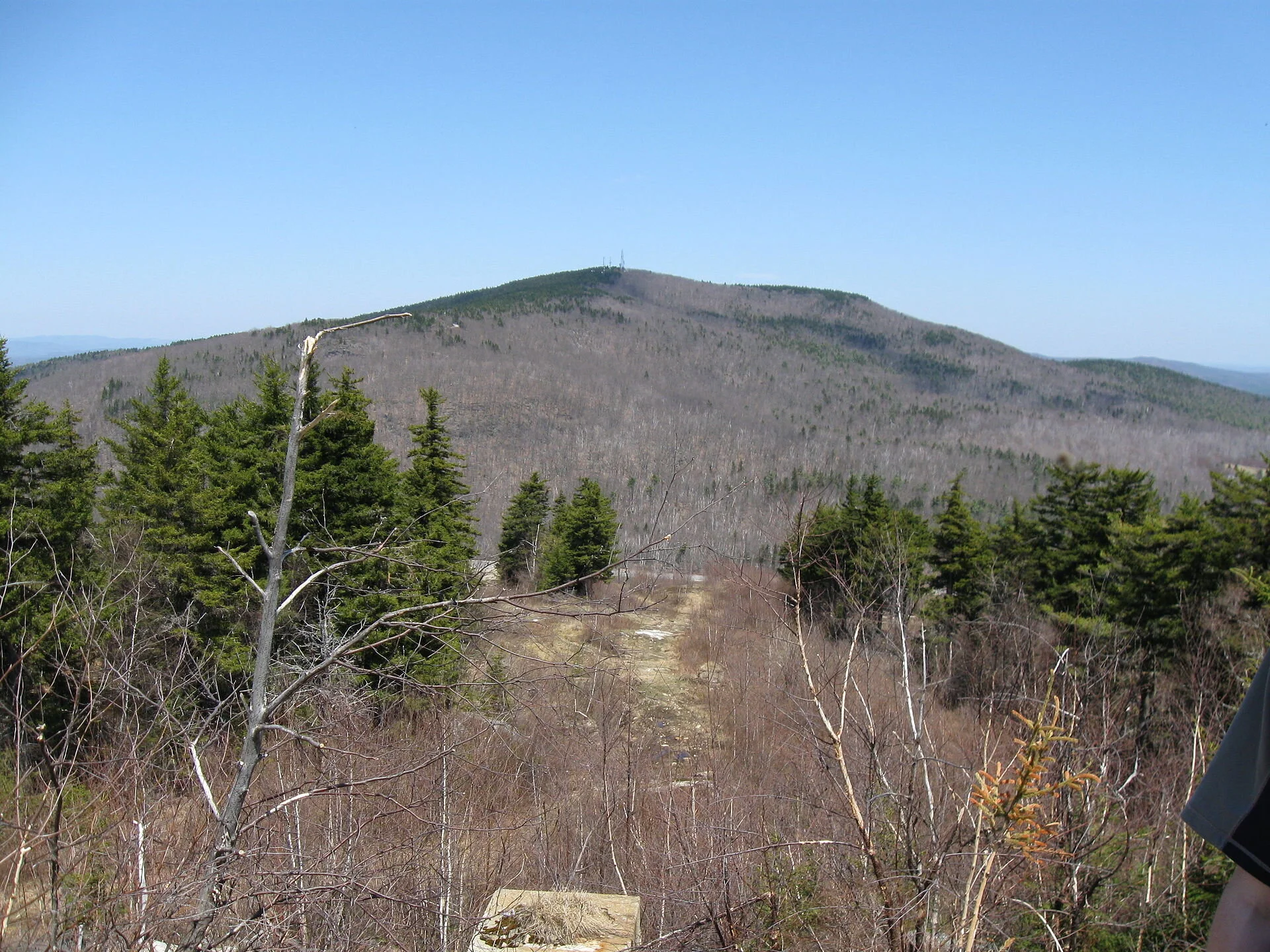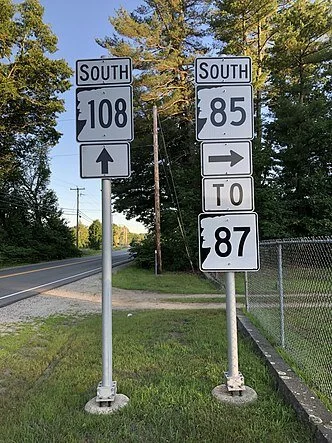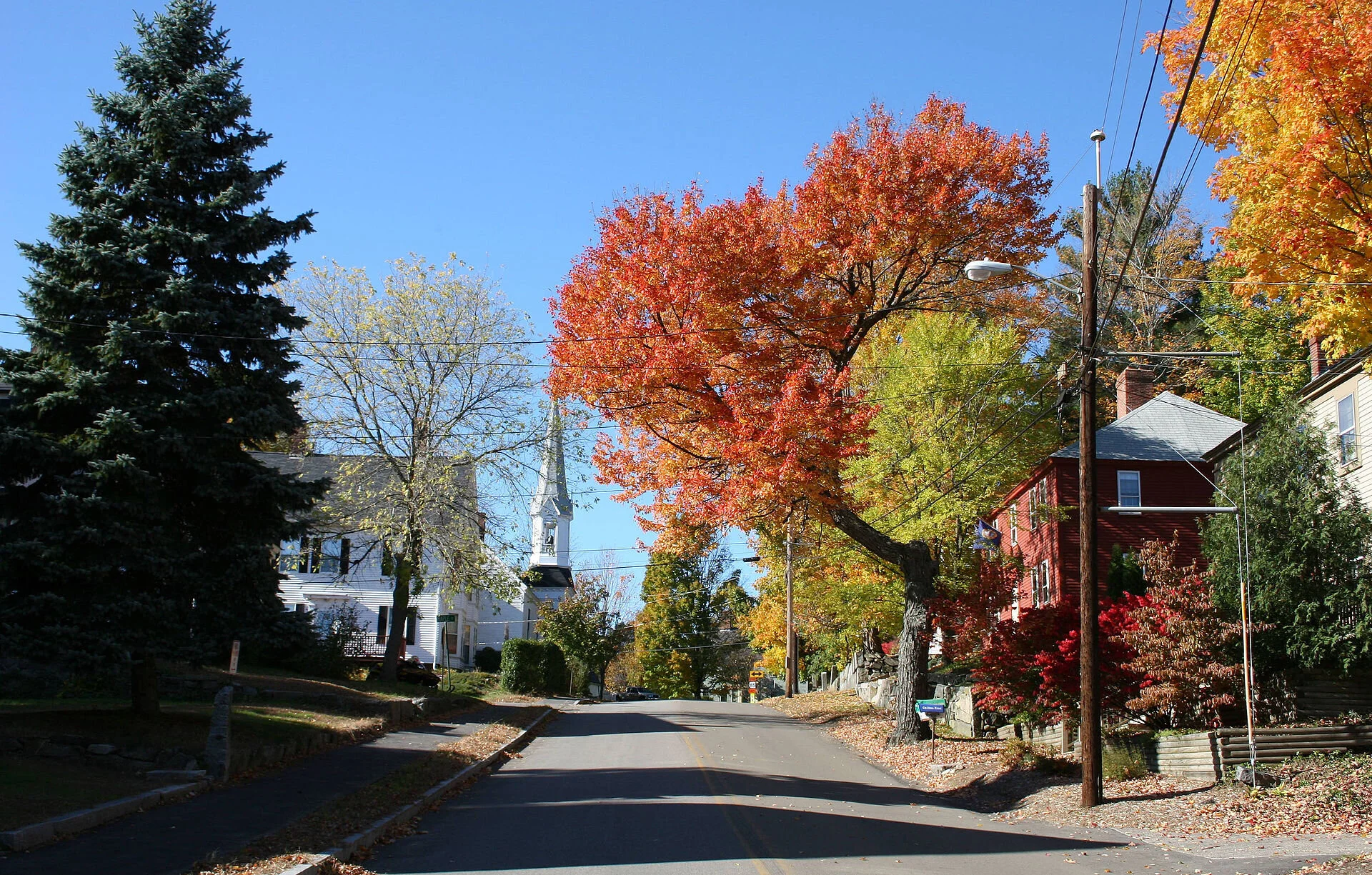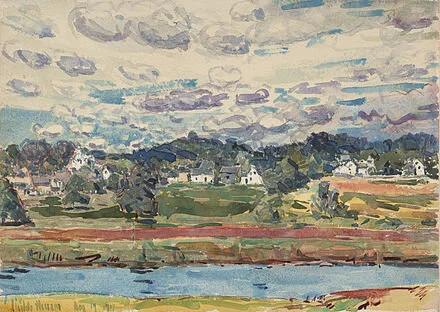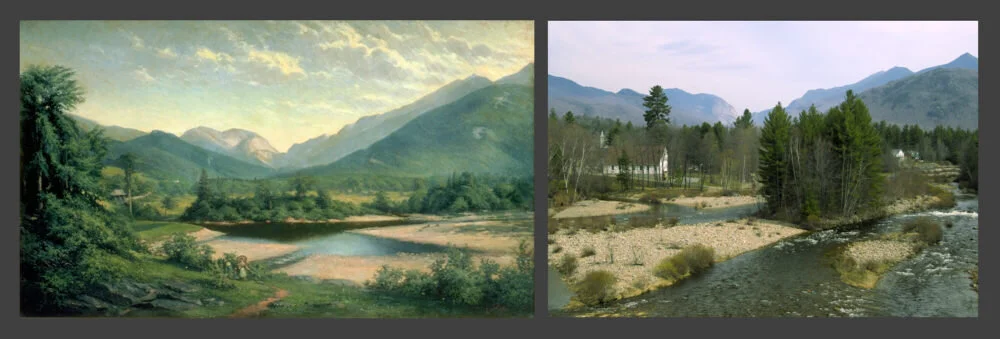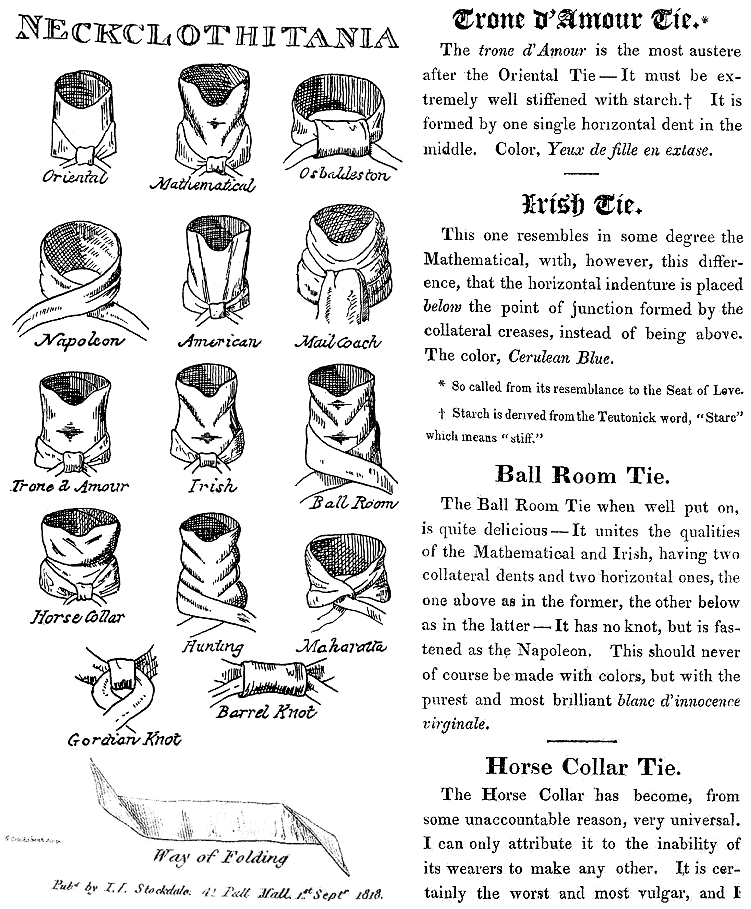
‘Strange ancient memories’
Harrisville, N.H. in 1905
— From H.P. Lovecraft (1890-1937), writer and a Providence native who’s known for his horror and science-fiction stories.
Oh come on! There were others
Bedford(N.H.) Presbyterian Church
“We had no religion at all, but we were Jews in New Hampshire, and my sister – who is now a rabbi – said it best: We were, like, the only Jews in Bedford, New Hampshire, as well as the only Democrats, so we just kind of associated those two things together. My dad raised us to believe that paying taxes is an honor.”
— Roseanne Barr (born 1952), American comedian and actress
Mountainous conception
Part of Avon Mountain, in Connecticut. It’s known for its microclimate.
“The night you were conceived
your father drove up Avon Mountain {near Hartford}
and into the roadside rest
that looked over the little city,
its handful of scattered sparks.’’
— From “Breaking Silence — For My Son,’’ by Patricia Fargnoli (1937-2021), an American poet and psychotherapist. She grew up in Connecticut and later moved to Walpole, N.H. (best known as the home of TV history-documentary maker Ken Burn’s Florentine Films) and on the Connecticut River. She was the New Hampshire Poet Laureate from December 2006 to March 2009.
Walpole’s public library in 1906. The famous and highly literary and reformist Alcott family, connected to the Concord, Mass.-based Transcendentalists, lived there for a time in the 1850s, as have other writers and painters, drawn by the region’s great natural beauty. The abundant lilacs in the town inspired Louisa May Alcott (who wrote Little Women) to write the 1878 book Under the Lilacs.
Hollywood in Hanover
“Dolores del Rio for the Trail of '98” (Metro-Goldwyn-Mayer, 1928, gelatin silver print), by Russell Ball, in “Photographs from Hollywood’s Golden Era: The John Kobal Foundation,’’ at the Hood Museum of Art at Dartmouth College, Hanover, N.H.
The Hood’s acquisition of these photographs gives it one of the world’s largest collections of photos from Hollywood’s golden age.
The museum says that "these images cover the gamut of studio photography from portraiture and publicity shots to film stills from Hollywood’s golden era of the 1920s through the 1950s." In addition to the photographs, a virtual lecture by renown film historian and film-maker Kevin Brownlow will be held on March 3 from 12:30–1:30 EST. For more information, please visit here.
‘I celebrate plants’
“Weeds in Black” (encaustic), by Debra Claffey, who’s based in New Boston, a small town in southern New Hampshire. She’s a member of New England Wax (newenglandwax.com).
She says:
“My experience in horticulture and organic land care has led me to focus in on the plant world and the assaults on the soil, biodiversity of plant species, and the protection of native flora. I celebrate plants: their great age and history on the planet, their intelligence and successful adaptions, their beauty of form, shape, and infinite color. I marvel in our new knowledge of their ways of communication, of making themselves attractive to us and other species, and the trading of ‘goods and services’ that goes on between plants, fungi, bacteria, insects, birds, and even us mammals.’’
New Boston in 1875. Below is an edited version of the Wikipedia entry on the town, which was chartered in 1736.
“In 1820, the town had 25 sawmills, six grain mills, two clothing mills, two carding mills, two tanneries and a bark mill. It also had 14 schoolhouses and a tavern. The Great Village Fire of 1887, which started when a spark from a cooper's shop set a barn on fire, destroyed nearly 40 buildings in the lower village. In 1893, the railroad came to New Boston, and farm produce was sent by rail to city markets. Passenger service was discontinued in 1931, and the tracks were removed in 1935. Today the former grade is the multi-use New Boston Rail Trail.
“The town {along with the adjacent towns of Amherst and Mont Vernon} is home to the 2,800-acre New Boston Space Force Station, which started as an Army Air Corps bombing range in 1942. By 1960, it had become a U.S. Air Force base for tracking military satellites. In July 2021, the facility was given its current name and began operating as part of the United States Space Force. New Boston was also home to the Gravity Research Foundation from the late 1940s through the mid-1960s. Founder Roger Babson placed it in New Boston because he believed it safe from nuclear fallout should New York or Boston be attacked.’’
New Boston Space Force Station
‘It’s not intellectual’
Rock of Ages granite quarry in Graniteville, Vt.
]
“Never confuse faith, or belief — of any kind — with something even remotely intellectual.’’
— From A Prayer for Owen Meany, a novel by John Irving (born 1942)
The plot centers around John Wheelwright and Owen Meany, who live in the fictional town of Gravesend, N.H. (based on Irving’s hometown of Exeter, N.H.). As boys they are close friends, although John comes from an old rich family — as the illegitimate son of Tabitha Wheelwright — and Owen is the only child of a working-class granite quarryman. John's earliest memories of Owen involve lifting him up in the air, easy because of his permanently small stature, to make him speak. And an underdeveloped larynx causes Owen to speak in a high-pitched voice. During his life, Owen comes to believe that he is "God's instrument".
Jude Hall granite memorial stone in Exeter, N.H.
‘A Wintry Mix’
“Would you like to swing on a star?” (collage), by Rich Fedorchak, of Thetford, Vt., in the show “Wintry Mix’,’ at AVA Gallery and Art Center, Lebanon, N.H., Nov. 19-Dec. 30.
The gallery says: "The holiday exhibition will feature the work of member artists from Vermont and New Hampshire. Works in a variety of media—oil, watercolor, drawing, printmaking, mixed media, photography, ceramics, textiles, sculpture, jewelry, and glasswork—will be on display and available for sale in a wide range of prices."
A little local history
— Photo by Artaxerxes
In search of cheap help
View of Pack Monadnock Mountain from Temple Mountain, on the eastern side of Sharon, N.H. Temple Mountain was the site of the privately owned Temple Mountain Ski Area from 1938 to 2001, when it was closed. In 2007, the state took it over and turned it into a park. The ski area’s proximity to Greater Boston made it very popular in its heyday, in the ‘50s and ‘60s.
— Photo by Ken Gallager
“I don't mind America becoming a Third World country. The weather is better in the Third World than it is where I live in New Hampshire. And household help will be much cheaper.”
P. J. O'Rourke (born 1947), American writer and satirist. He lives in Sharon, N.H. (population 352 in the 2010 Census.)
Go back where you came from
Junction signage in Newfields, N.H., as seen in 2005 (left) and 2019. It’s a beautiful small town to find yourself in, even if you’re lost. See below.
"We don't enjoy giving directions in New Hampshire. We tend to think if you don't know where you're going, you don't belong where you are."
— John Irving (born 1942), novelist who was born and raised in Exeter, N.H.
Squamscott Street in Newfields
“Newfields, New Hampshire ‘‘(1917), by Childe Hassam, at the Princeton University Art Museum
Sounds from the field
“Franconia Notch” (oil painting, left), by George Albert Frost (1843-1907); Franconia Notch in 2004 (right)
“There was a sound of grouse from the field
of grouse or a box guitar
And the way the storm idled over the mountain
revealing the mountain dissolving in light….’’
— From ‘‘Five Nights in the North Country Solstice,’’ by Kathy Fagan, an American poet. She was the poet-in-residence at The {Robert} Frost Place, in Franconia, N.H. , in 1985.
Using AI in remote learning
From The New England Council (newenglandcouncil.com)
BOSTON
“In partnership with artificial intelligence (AI) company Aisera, Dartmouth College recently launched Dart InfoBot, an AI virtual assistant developed to better support students and faculty members during the pandemic. Nicknamed “Dart,” the bot is designed to improve communication and efficiency while learning and working from home, with mere seconds of response time in natural language to approximately 10,000 students and faculty on both Slack and Dartmouth’s client services portal.
“The collaboration with Aisera allows for accelerated diagnosis and resolution times, automated answers to common information and technology questions, and proactive user engagement through a conversational platform.
“At Dartmouth, we wanted our faculty and students to have immediate answers to their information and technology questions online, especially during COVID. Aisera helps us achieve our goals to innovate and deliver an AI-driven conversational service experience throughout our institution. Faculty, staff, and especially students are able to self-serve their technology information using language that makes sense to them. Now our service desk is free to provide real value to our clients by consulting with them and building relationships across our campus.” said Mitch Davis, chief information officer for Dartmouth, in Hanover, N.H.’’
The field of artificial intelligence was founded at a workshop on the campus of Dartmouth during the summer of 1956. Those who attended would become the leaders of AI research for decades. Many of them predicted that a machine as intelligent as a human being would exist in no more than a generation.
'Materializing the medium's memory'
Image from ‘‘LUCID,’’ artist Exeter, N.H.-based Shaina Gates’s show from April 15 to May 15 at Gallery 263, Cambridge
The gallery says:
“This exhibition reflects the artist’s interest in the transfer and translation of images across surfaces, systematized processes, and theories related to dimensionality and the organization of space. In ‘LUCID,’’ a body of lumen prints on both paper and film are on view. The works in ‘LUCID’, which conjure a joy similar to what one may experience when looking through a kaleidoscope, map the physical experience of how the prints were systematically folded by the artist, materializing the medium’s memory as a visible record. In this way, the material becomes lucid.’’
Downtown Exeter, N.H.
'Cynicism is fear'
Ken Burns
“I think we too often make choices based on the safety of cynicism, and what we’re led to is a life not fully lived. Cynicism is fear, and it’s worse than fear; it’s active disengagement.’’
—Ken Burns (born 1953) celebrated maker of documentary films on topics in American history. His production company is Florentine Films, based in Walpole, N.H. The company’s name came from co-founder Elaine Mayes’s hometown of Florence, Mass. Burns attended Hampshire College, in nearby Amherst, Mass.
The Walpole, N.H. Town Hall
How Biden’s COVID relief and stimulus program could most boost New England’s recovery
Presidential Range of the White Mountains, taken a few miles west of Gorham, N.H.
— Photo by AlexiusHoratius
BOSTON
“On Feb. 1, The New England Council (newenglandcouncil.com) sent a letter to each member of the New England congressional delegation regarding the urgent need for additional federal COVID relief and economic-stimulus legislation. In the letter, the council highlighted specific provisions of President Biden’s proposed American Rescue Plan that we believe would be particularly beneficial for our region’s continued recovery. The letter also outlines recommendations for additional relief measures based upon some of the feedback we have received from members over the past several weeks since the President’s plan was released.
We are grateful to the many council members who provided feedback on the American rescue plan through our policy committees, as well as those who offered other recommendations. We expect that there will be additional opportunities to weigh in on further relief and economic stimulus proposals in the weeks and months to come. We encourage you to communicate any suggestions or priorities that you’d like to see included in any future advocacy efforts to the council’s policy staff.’’
Keeps them humble
Walpole, N.H., Town Hall
“Walpole, New Hampshire, is small enough for us to keep that mom-and-pop feeling. The town reminds us every day of the power of history. And it’s important to stay in a place where whatever notoriety you get, plus fifty cents, will buy you a cup of coffee.
— Ken Burns, history documentary show impresario on PBS, in Yankee magazine July/August 2002 on being based in Walpole.
When utopian libertarians took on a N.H. town
In continuous operation since the 1840s, this store is now known as the Grafton Country Store. Image c. 1919
“The four libertarians who came to {Grafton} New Hampshire had thinner wallets than…other would-be utopians, but they had a new angle they believed would help {in 2004} them move the Free Town Project out of the realm of marijuana-hazed reveries and into reality. Instead of building from scratch, they would harness the power and infrastructure of an existing town—just as a rabies parasite can co-opt the brain of a much larger organism and force it work against its own interests, the libertarians planned to apply just a bit of pressure in such a way that an entire town could be steered toward liberty.”
― Matthew Hongoltz-Hetling, in A Libertarian Walks Into a Bear: The Utopian Plot to Liberate an American Town (published September 2020)
Grafton, in the “Live Free or Die State,’’ was once a libertarian hub of the Free State Project, founded in 2001, with part of the town’s appeal its absence of zoning laws and a very low property-tax rate. But as of 2019, Grafton itself had the 16th highest property-tax rate in New Hampshire. That’s in part because of more affluent and well-educated people moving into a county best know for the Ivy League institution Dartmouth College, in Hanover, and the Dartmouth-Hitchcock Medical Center, in Lebanon. These newcomers demand better services, especially in public education.
The “Free Town Project” was begun by members of the Free State Project to encourage libertarians to move to Grafton. Although the Free Town Project died after conflict between organizers from outside and local residents, many libertarians continued to move to the town. Indeed, Grafton has remained a center of libertarian activism with a strong focus on homesteading, marijuana legalization and agorism, which is a social philosophy that advocates a society in which all relations between people are based on voluntary exchanges.
Originally granted its charter in 1761, Grafton takes its name from Augustus FitzRoy, 3rd Duke of Grafton, a relative of colonial governor Benning Wentworth.
Up to the 20th Century, Grafton’s economic base was subsistence dairy, sheep and other farming, small-scale manufacturing and mining, of all things, with several mica mines and granite quarries, most notably Ruggles Mine.
The Ruggles Mine back when it was a tourist attraction. Sam Ruggles (1770-1843) started the first commercial mica mine in the United States at the site that bears his name.
The United Mica Company operated this mill between 1909 and 1916. Image c. 1909
The tie-loving ghost
“Last night my color-blind chain-smoking father
who has been dead for fourteen years
stepped up out of a basement tie shop
downtown and did not recognize me.’’
— From “My Father’s Neckties,’’ by Maxine Kumin (1925-2014), a U.S. poet laureate and Pulitzer Prize-winner and a Warner, N.H., horse farmer.
Statue of New Hampshire Gov. Walter Harriman in Ms. Kumin’s town of Warner, N.H.
Still thirsting
“The grass resolves to grow again,
receiving the rain to that end,
but my disordered soul thirsts
after something it cannot name.’’
— From “August Rain, after Haying,’’ by Jane Kenyon (1947-1995), a poet who lived with her husband, Donald Hall (1928-2018), also a poet, in very rural Wilmot, N.H.
The light is always changing
The common of Lyme, N.H.
— Photo by Magicpiano
“Downtown’’ Dublin, N.H., the highest town in New England and the headquarters of Yankee Inc., which owns Yankee Magazine.
“I have lived in New Hampshire nearly forty years, and I am still discovering places and moments of beauty that surprise me. Sometimes it may be seeing the same setting — a country road, a hillside, a meadow — in a different light or in a different season.’’
— Mel Allen, editor of Yankee Magazine
Opening up
“Connor Pond, Early Spring” (oil on canvas), by Yvonne Lamothe, via Galatea Fine Art online gallery. Connor Pond is in Ossipee, N.H. Ms. Lamothe lives in Massachusetts and New Hampshire.
See:
https://www.galateafineart.com/
and Ms. Lamothe’s site:
